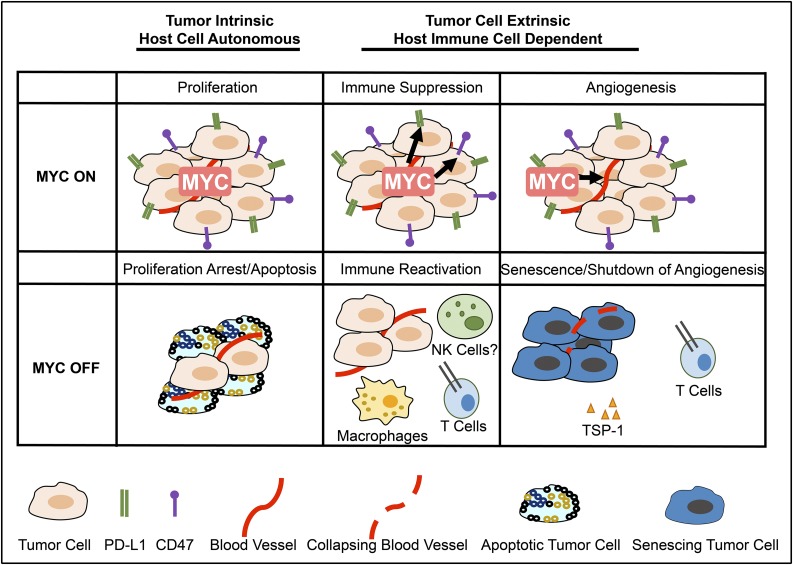Figure 1.
MYC inactivation elicits tumor regression through both tumor-intrinsic and host-dependent mechanisms. Left to right: through tumor-intrinsic mechanisms, inactivation of MYC induces proliferative arrest and apoptosis (left panel). The death of tumor cells through apoptosis may contribute to the immune response by recruiting innate immune cells. Inactivation of MYC suppresses immune checkpoints and recruits an adaptive immune-dependent response (center panel), activating macrophages and CD4+ T cells. The final phase of tumor elimination likely involves the recruitment of an immune response through T cells as well as the production of other cytokines. Immune activation has been associated with the remodeling of the tumor microenvironment, including the induction of cellular senescence and the shutdown of angiogenesis. This occurs in part through TSP-1 (right panel).

